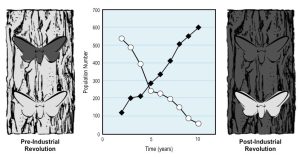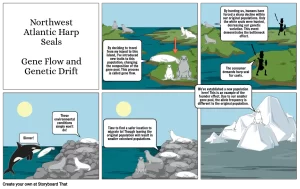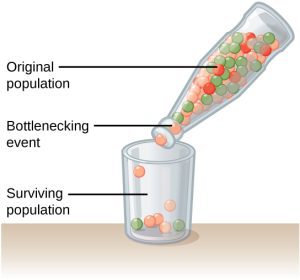AP Biology Unit 7.4: Population Genetics
Introduction: Understanding Population Genetics
Evolution is the process by which populations change over time, and it fundamentally acts upon genetic variations present within a population. Genetic variation, often arising through mutations, genetic drift, gene flow, and other mechanisms, fuels evolution and shapes the diversity of life. In this article, we explore the key processes of population genetics and how they contribute to evolutionary changes in populations.
Mutations: The Source of Genetic Variation
Mutations are one of the primary sources of genetic variation, providing the raw material upon which natural selection can act. Mutations occur as random alterations in the DNA sequence, often arising during DNA replication, exposure to radiation or chemicals, or viral infections. 🧪
While most mutations are neutral, meaning they do not impact an organism’s fitness, others can have significant effects—either beneficial or deleterious. Beneficial mutations improve an organism’s survival and reproductive success, while deleterious mutations can negatively affect these outcomes. In either case, mutations increase the genetic variation in a population and can influence evolutionary changes.
A well-known example is the peppered moth during the Industrial Revolution. Initially, most peppered moths had light-colored wings that helped them blend into lichen-covered trees. However, as soot from industrial pollution darkened the trees, moths with a dark-colored mutation had better camouflage and a survival advantage, leading to an increase in their population frequency.
Genetic Drift and Gene Flow: Random Changes in Allele Frequencies
Population genetics is influenced not only by natural selection but also by other mechanisms like genetic drift and gene flow. Both of these processes can significantly alter the genetic makeup of a population, independent of selective environmental pressures.
Genetic Drift refers to random fluctuations in the frequency of alleles in a population, often resulting from chance events. For example, natural disasters, like volcanic eruptions, can eliminate a significant portion of a population, altering allele frequencies due to chance alone. Genetic drift has a more pronounced effect on smaller populations, where random fluctuations have a bigger impact relative to population size. 🌋
Gene Flow, on the other hand, occurs when individuals migrate between populations, bringing their genetic material with them. This exchange of genes can introduce new alleles to a population and increase genetic diversity. Gene flow helps homogenize neighboring populations and keeps them genetically similar.

Founder Effect and Bottleneck Effect: Types of Genetic Drift
The Founder Effect and Bottleneck Effect are specific forms of genetic drift that occur when a small subset of a population becomes isolated or experiences a dramatic reduction in size.
Founder Effect: Occurs when a small group of individuals breaks away from a larger population and colonizes a new area. Due to the limited genetic diversity of the founders, this new population may differ significantly from the original population. For example, certain island bird species evolved after a small founding population settled on an isolated island. 🗺
Bottleneck Effect: Takes place when a population’s size is drastically reduced due to a catastrophic event, such as an earthquake or disease outbreak. The surviving population may have limited genetic variation, leading to a less diverse gene pool compared to the original population.
These effects lead to a loss of genetic variation, affecting allele frequencies and potentially influencing future evolution.

Speciation: The Development of New Species
Through genetic drift, gene flow, natural selection, and other mechanisms, populations can diverge enough to develop into entirely new species—a process known as speciation.
Speciation often occurs when populations are separated and become reproductively isolated. Over time, the two populations evolve independently, accumulating genetic differences. Eventually, these differences become so significant that individuals from the two populations can no longer interbreed or produce viable offspring, resulting in the formation of separate species.
In examples such as the Founder Effect, where a new population becomes isolated, these populations may evolve to adapt to different environmental conditions, leading to the development of new traits. As these traits become advantageous, they contribute to the genetic divergence needed for speciation.
Gene Flow & Speciation
Gene flow can also play a crucial role in preventing speciation by mixing genes between populations, reducing the differences between them. However, in the absence of gene flow, separated populations evolve independently, increasing the likelihood of speciation over time. Understanding these processes provides insight into how biodiversity emerges and how populations adapt to environmental changes. 🌱
Summary
Population genetics is a cornerstone of understanding evolution and biodiversity. From random genetic mutations to drift, gene flow, and speciation, these forces shape the genetic diversity within populations and contribute to the evolution of life on Earth. Whether through random events or adaptive evolution, the genetic variation produced within populations is essential for species to survive and thrive in an ever-changing world.
Understanding these concepts helps us appreciate the complexity of evolutionary processes and how genetic diversity is the key to resilience and adaptation.







